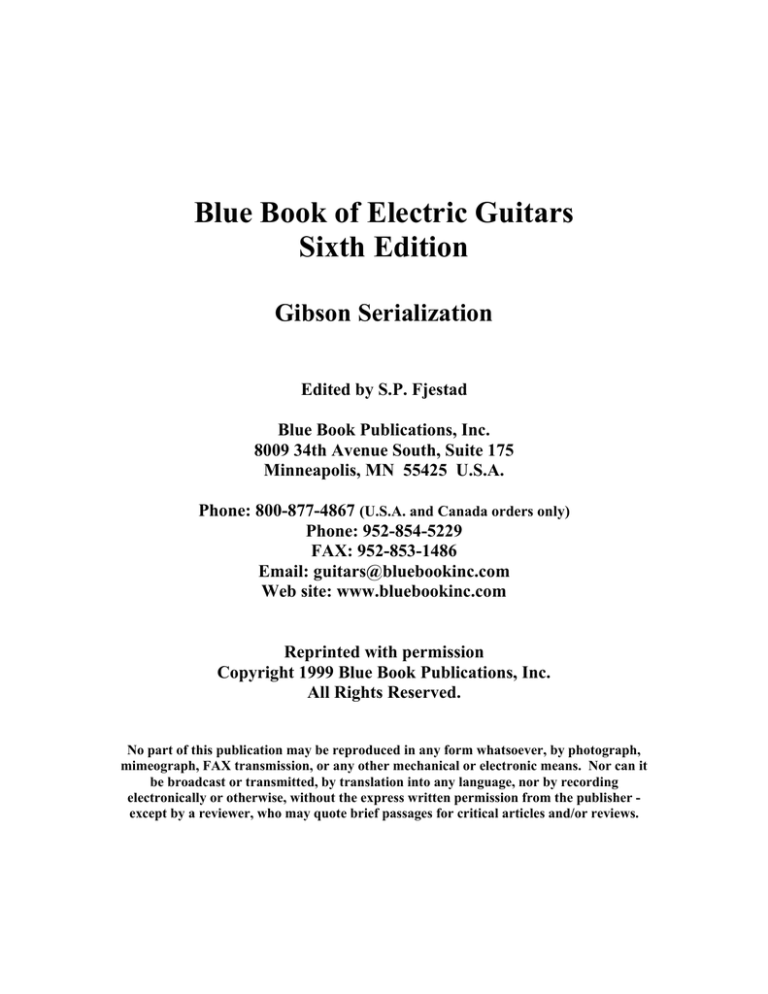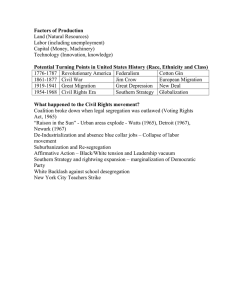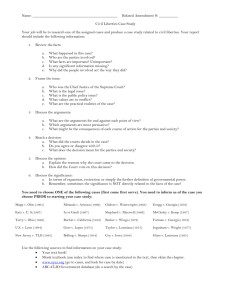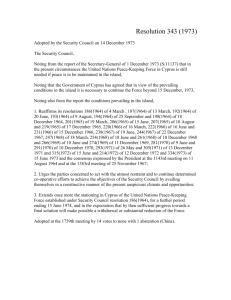
Blue Book of Electric Guitars
Sixth Edition
Gibson Serialization
Edited by S.P. Fjestad
Blue Book Publications, Inc.
8009 34th Avenue South, Suite 175
Minneapolis, MN 55425 U.S.A.
Phone: 800-877-4867 (U.S.A. and Canada orders only)
Phone: 952-854-5229
FAX: 952-853-1486
Email: guitars@bluebookinc.com
Web site: www.bluebookinc.com
Reprinted with permission
Copyright 1999 Blue Book Publications, Inc.
All Rights Reserved.
No part of this publication may be reproduced in any form whatsoever, by photograph,
mimeograph, FAX transmission, or any other mechanical or electronic means. Nor can it
be broadcast or transmitted, by translation into any language, nor by recording
electronically or otherwise, without the express written permission from the publisher except by a reviewer, who may quote brief passages for critical articles and/or reviews.
GIBSON SERIALIZATION
Identifying Gibson instruments by serial number is tricky at best and downright impossible in some cases.
The best methods of identifying them is by using a combination of the serial number, the factory order
number and any features that are particular to a specific time that changes may have occurred in instrument
design (i.e. logo design change, headstock volutes, etc). There have been 6 different serial number styles
used to date on Gibson instruments.
The first serialization started in 1902 and ran until 1947. The serial numbers started with number 100 and
go to 99999. All numbers are approximates. In most cases, only the upper end instruments were assigned
identification numbers.
YEAR
1903
1904
1905
1906
1907
1908
1909
1910
1911
1912
1913
1914
1915
1916
1917
1918
1919
1920
1921
1922
1923
1924
1925
LAST #
1150
1850
2550
3350
4250
5450
6950
8750
10850
13350
16100
20150
25150
32000
39500
47900
53800
62200
69300
71400
74900
80300
82700
YEAR
1926
1927
1928
1929
1930
1931
1932
1933
1934
1935
1936
1937
1938
1939
1940
1941
1942
1943
1944
1945
1946
1947
LAST #
83600
85400
87300
89750
90200
90450
90700
91400
92300
92800
94100
95200
95750
96050
96600
97400
97700
97850
98250
98650
99300
99999
White oval labels were used on instruments from 1902 to 1954, at which time the oval label was changed to
an orange color. On instruments with round soundholes, this label is visible directly below it. On f-hole
instruments, it is visible through the upper f-hole. The second type of serial numbers used started with an A
prefix and ran from 1947 to 1961. The first number is A 100.
YEAR
1947
1948
1949
1950
1951
1952
1953
1954
LAST #
A 1305
A 2665
A 4410
A 6595
A 9420
A 12460
A 17435
A 18665
YEAR
1955
1956
1957
1958
1959
1960
1961
LAST #
A 21910
A 24755
A 26820
A 28880
A 32285
A 35645
A 36150
When production of solid body guitars began, an entirely new serial number system was developed.
Though not used on the earliest instruments produced (those done in 1952), a few of these instruments have
3 digits stamped on the headstock top. Some time in 1953, instruments were ink stamped on the headstock
back with 5 or 6 digit numbers, the first indicating the year, the following numbers are production numbers.
The production numbers run in a consecutive order and, aside from a few oddities in the change over years
(1961-1962), it is fairly accurate to use them when identifying solid body instruments produced between
1953 and 1961. Examples of this system:
4 2205 = 1954
614562 = 1956
In 1961 Gibson started a new serial number system that covered all instrument lines. It consisted of
numbers that are impressed into the wood. It is also generally known to be the most frustrating and hard to
understand system that Gibson has employed. The numbers were used between the years 1961-1969. There
are several instances where batches of numbers are switched in order, duplicated, not just once, but up to
four times, and seem to be randomly assigned, throughout the decade. In general though, the numbers are
approximately as follows:
YEAR
1961
1962
1963
1964
1962
1963
1967
1967
1967
1967
1967
1967
1967
1967
1963, 1967
1963
1963, 1967
1963
1963, 1967
1963
1963, 1967
1963
1963, 1967
1963
1964
1963
1963
1964
1963
1964
1964, 1965
1964
1964
1965
1965
1965
1965, 1967
1965, 1967
1965, 1967
1965
1967
APPROXIMATE
SERIAL RANGE
100-42440
42441-61180
61450-64220
64240-70500
71180-96600
96601-99999
000001-008010
010000-042900
044000-044100
050000-054400
055000-063999
064000-066010
067000-070910
090000-099999
100000-106099
106100-108900
109000-109999
110000-111549
111550-115799
115800-118299
118300-120999
121000-139999
140000-140100
140101-144304
144305-144380
144381-145000
147009-149864
149865-149891
149892-152989
152990-174222
174223-176643
176644-199999
200000-250335
250336-291000
301755-302100
302754-305983
306000-306100
307000-307985
309848-310999
311000-320149
320150-320699
APPROXIMATE
YEAR
SERIAL RANGE
1965
320700-321100
1965
322000-326600
1965
328000-328500
1965
328700-329179
1965, 1967
329180-330199
1965, 1967, 1968330200-332240
1965
332241-347090
1965
348000-348092
1966
348093-349100
1965
349121-368638
1966
368640-369890
1967
370000-370999
1966
380000-385309
1967
390000-390998
1965, 1966, 1967, 1968 400001-400999
1966
401000-407985
1966
408000-408690
1966
408800-409250
1966
420000-426090
1966
427000-429180
1966
430005-438530
1966
438800-438925
1965, 1966, 1968, 1969 500000-500999
1965
501010-501600
1968
501601-501702
1965, 1968
501703-502706
1968
503010-503110
1965, 1968
503405-520955
1968
520956-530056
1966, 1968, 1969530061-530850
1968, 1969
530851-530993
1969
530994-539999
1966, 1969
540000-540795
1969
540796-545009
1966
550000-556910
1969
558012-567400
1966
570099-570755
1969
580000-580999
1966, 1967, 1968, 1969 600000-600999
1969
601000-601090
1969
605901-606090
YEAR
1966, 1967
1968, 1969
1966, 1967, 1968, 1969
1966, 1969
1969
1969
1966, 1969
1966
1969
1966, 1969
1966
1967
APPROXIMATE
SERIAL RANGE
700000-700799
750000-750999
800000-800999
801000-812838
812900-814999
817000-819999
820000-820087
820088-823830
824000-824999
828002-847488
847499-858999
859001-880089
YEAR
1967
1968
1967
1968
1968
1968
1968
1968
1968
1968
1968
1968
APPROXIMATE
SERIAL RANGE
893401-895038
895039-896999
897000-898999
899000-899999
900000-902250
903000-920899
940000-941009
942001-943000
945000-945450
947415-956000
959000-960909
970000-972864
From 1970-1975 the method of serializing instruments at Gibson became even more random. All numbers
were impressed into the wood and a six digit number assigned, though no particular order was given and
some instruments had a letter prefix. The orange labels inside hollow bodied instruments was discontinued
in 1970 and were replaced by white and orange rectangle labels on the acoustics, and small black, purple
and white rectangle labels were placed on electric models.
In 1970, the words "MADE IN USA" was impressed into the back of instrument headstocks (though a few
instruments from the 1950s also had MADE IN USA impressed into their headstocks as well).
Year(s)
1970, 1971, and 1972
1973
1974 and 1975
Approximate Series Manufacture
100000s, 600000s, 700000s, 900000s
000001s, 100000s, 200000s, 800000s and a few “A” + 6 digit numbers
100000s, 200000s, 300000s, 400000s,500000s, 600000s, 800000s
and a few A-B-C-D-E-F + 6 digit numbers
During the period from 1975-1977 Gibson used a transfer that had eight digit numbers, the first two
indicate the year, 99=1975, 00=1976 and 06=1977, the following six digits are in the 100000 to 200000
range. MADE IN USA were also included on the transfer and some models had LIMITED EDITION also
applied. A few bolt on neck instruments had a date ink stamped on the heel area.
In 1977, Gibson first introduced the serialization method that is in practice today. This updated system
utilizes an impressed eight digit numbering scheme that covers both serializing and dating functions. The
pattern is as follows:
YDDDYPPP
YY is the production year
DDD is the day of the year
PPP is the plant designation and/or instrument rank.
The numbers 001-499 show Kalamazoo production, 500-999 show Nashville production. The Kalamazoo
numbers were discontinued in 1984.
When acoustic production began at the plant built in Bozeman, Montana (in 1989), the series' numbers
were reorganized. Bozeman instruments began using 001-299 designations and, in 1990, Nashville
instruments began using 300-999 designations. It should also be noted that the Nashville plant has not
reached the 900s since 1977, so these numbers have been reserved for prototypes. Examples:
70108276 means the instrument was produced on Jan.10, 1978, in Kalamazoo and was the 276th
instrument stamped that day.
82765501 means the instrument was produced on Oct. 3, 1985, in Nashville and was the 1st instrument
stamped that day.
However, it has come to light recently that the Kalamazoo plant did not directly switch over to the “new” 8
digit serialization method in 1977. When the Nashville Gibson plant was opened in 1974, it was decided
that the bulk of the production of products would be run in the South; the Kalamazoo plant would produce
the higher end (fancier) models in the North. Of course, many of the older guitar builders and craftsmen
were still in Kalamazoo; and if they weren't ready to change how they built guitars, then they may not have
been ready to change how they numbered them! Certain guitar models built in the late 1970s can be used
to demonstrate the old-style 6 digit serial numbers. It is estimated that Gibson's Kalamazoo plant
continued to use the 6 digit serial numbers through 1978 and 1979. So double check the serial numbers
on those 1970s L-5s, Super 400s, and Super 5 BJBs!
Gibson's F O N System
In addition to the above serial number information, Gibson also used Factory Order Numbers (F O N) to
track batches of instruments being produced at the time. In the earlier years at Gibson, guitars were
normally built in batches of 40 instruments. Gibson's Factory Order Numbers were an internal coding that
followed the group of instruments through the factory. Thus, the older Gibson guitars may have a serial
number and a F O N. The F O N may indicate the year, batch number, and the ranking (order of production
within the batch of 40).
This system is useful in helping to date and authenticate instruments. There are three separate groupings of
numbers that have been identified and are used for their accuracy. The numbers are usually stamped or
written on the instrument's back and seen through the lower F hole or round soundhole, or maybe
impressed on the back of the headstock.
1908-1923 Approximate #s
YEAR
1908
1909
1910
1911
1912
1913
1914
1915
1916
FON
259
309
545, 927
1260, 1295
1408, 1593
1811, 1902
1936, 2152
2209, 3207
2667, 3508
YEAR
1917
1918
1919
1920
1921
1922
1923
FON
3246, 11010
9839, 11159
11146, 11212
11329, 11367
11375, 11527
11565, 11729
11973
F O Ns for the years 1935-1941 usually consisted of the batch number, a letter for the year and the
instrument number. Examples are as follows:
722 A 23
465 D 58
863 E 02.
Code Letter and Year
A
1935
B
1936
C
1937
D
1938
E
F
G
1939
1940
1941
Code Letter F O Ns were discontinued after 1941, and any instruments made during or right after World
War II do not bear an F O N codes. In 1949, a four digit F O N was used, but not in conjunction with any
code letter indicating the year.
From 1952-1961, the F O N scheme followed the pattern of a letter, the batch number and an instrument
ranking number (when the guitar was built in the run of 40). The F O N is the only identification number
on Gibson's lower grade models (like the ES-125, ES-140, J-160E, etc.) which do not feature a paper label.
Higher grade models (such as the Super 400, L-5, J-200, etc.) feature both a serial number and a F O N.
When both numbers are present on a higher grade model, remember that the F O N was assigned at the
beginning of the production run, while the serial number was recorded later (before shipping). The serial
number would properly indicate the actual date of the guitar. F O N examples run thus:
Y 2230 21
V 4867 8
R 6785 15
Code Letter and Year
Z
1952
Y
1953
X
1954
W
1955
V
1956
After 1961 the use of FONs was discontinued at Gibson.
U
T
S
R
Q
1957
1958
1959
1960
1961
There are still some variances that Gibson uses on some instruments produced today, but for the most part
the above can be used for identifying instruments. For the most accurate identification you would need to
contact the Gibson Guitar Corporation itself.






